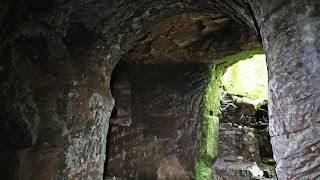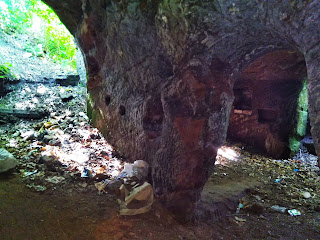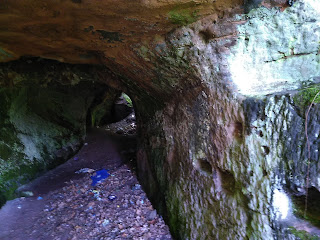Origin:
The Brinksway Caves take their name from Brinksway, a nearby road that stretches a small portion of the A560 to Cheadle Hulme. The road took the name from the Middle English brink, an edge or bank, and the Old English weg, a path; hence, a road at a brink.



Early History:
The caves date back to at least 1670, which could have been excavated
by the workers at the local corn mill to widen and increase the river flow, possibly for the water driven grinder. The main section consists of seven arches, and various nooks and crannies the crumbling sandstone would have been easy to form the underground structures. In addition, the caves are also believed to have been constructed by navvies working on the Stockport Viaduct, though it is likely that this was an expansion of pre-existing minor cave network. The caves functioned as a residence for the workers, as they were unable to acquire lodging due to poor pay.
In 1851, the caves were used as a distillery for purifying gas tar to produce naphtha. A pipe-maker was also known to work in the caves.



Shortly before the Second World War in 1938, sections of the caves were excavated to construct air raid shelters, the first of which opened on 28 October 1939. As the threat of bombing has subsided by 1943, the shelters were no longer open every night. The shelters were sealed off from the public in 1948.
In the present day, homeless people, with up to four at a time, mostly use the caves as a shelter. Due to the dangerous location of the caves, several residents have fallen into the river below. In 2015, a woman broke her spine after a 30-foot fall, requiring a rescue from specialist firefighters.










































How do you get in
ReplyDeleteHi Mate ..there was a small hole that was breached , somebody , chiseled through the layer of concrete and cut through the steel plate. I managed to squeeze thru...I believe it has been blocked up again..
Delete